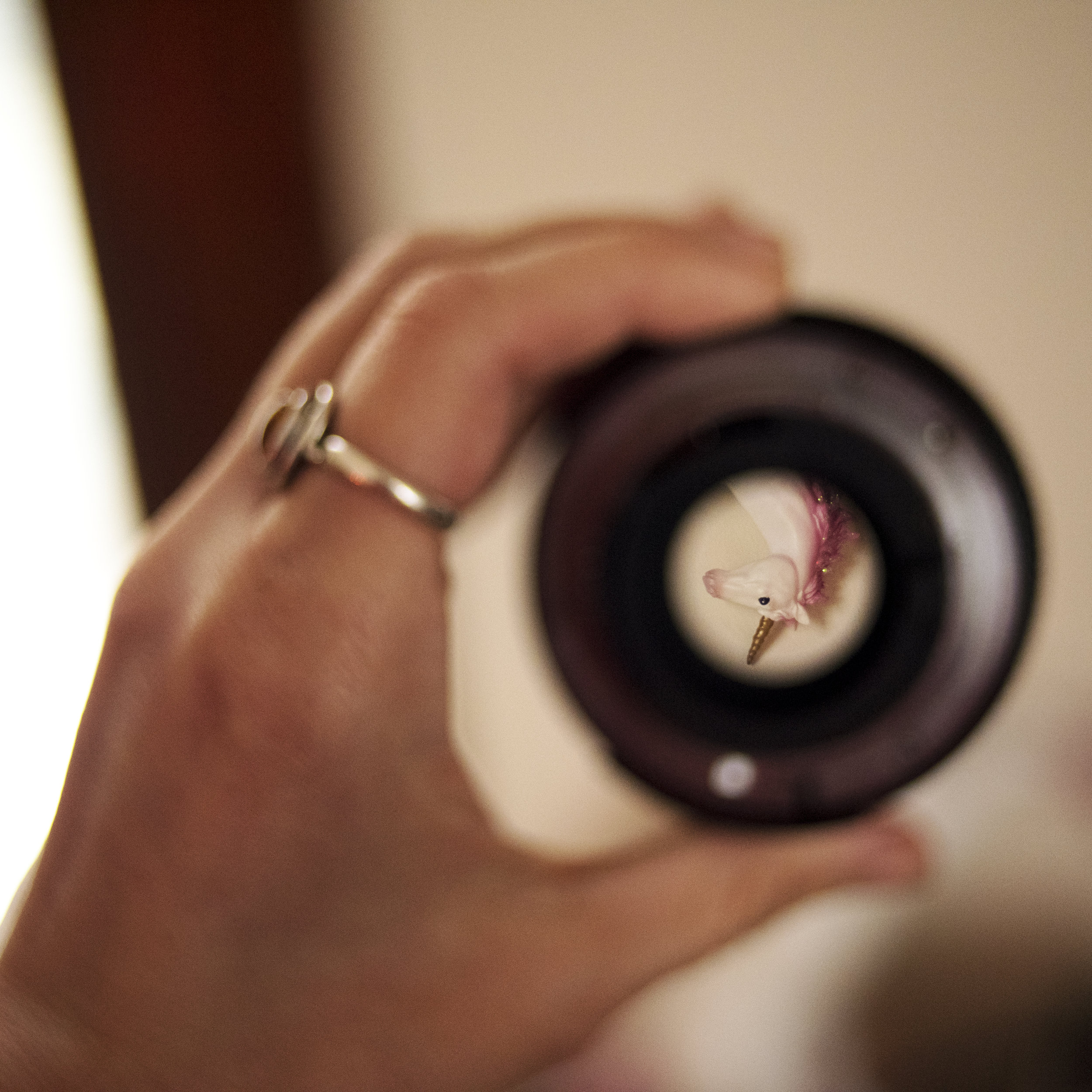The Unicorn Academy Guide to Amateur Photography (Four): All About Aperture and Aperture Priority
Did you know that camera lenses work like our eyes? They receive what you see upside-down, but your brain corrects your vision. This is why DSLRs have mirrors to reflect the image in the correct position.
Aperture: a space through which light passes in an optical or photographic instrument, especially the variable opening by which light enters a camera.
The unit of measurement for apertures on a camera are called F-stops. If you look at the barrel of your lens where the lens mount meets the camera body, you will see a series of numbers that start low from the left and increase to the right. I’m actually a huge nerd and have the f-stops from a 50mm 1.8 aperture ring tattooed on my arm. These are the F-stops available for that particular lens. The lower the number, the wider your aperture is and the shallower your depth of field. If you’ve ever seen a portrait of a person where their face is in-focus but the background is blurry, this was shot with a low aperture. The higher the f-stop, the smaller the aperture and the greater your depth of field. Basically, aperture controls how much light is let into your camera and onto the sensor.
The numbers near the end of your lens barrel by the mount is the "aperture ring"
Have you ever had to squint at a book or computer screen to read text easier? This is a great way to understand depth of field. When you squint, that is very similar to a high-aperture. Without as much light going into your lens or eyeballs, the image is going to be sharper and more in-focus overall. Actually, the pupils and iris’ of your eyes work similarly to an aperture ring. Your pupils dilate in the dark to let more light in, whereas they get smaller if there is light.
Aperture priority is likely the mode I use the most aside from Manual. When you turn that dial to “A” you’re basically telling the camera you want to control the F-stop, but you want the camera to choose the best shutter speed based on the F-stop you selected.
I personally use Aperture priority when I’m shooting fast and don’t want to miss things changing settings as I shoot. If I understand a particular lighting situation and generally want my photos to look a certain way, I’ll select this mode and let the camera figure out the shutter speed. For portraiture, I typically shoot low apertures as I like the sharp foreground and blurry background, for images where I want as many areas of the image to be as sharp as possible, I’ll shoot higher apertures. Since I primarily am a portrait photographer, I shoot wide-open more often than not.
If you’re shooting groups of people, a really good rule of thumb that I follow is to set your aperture to match the number of subjects in your image. For example, if you’re photographing one person, set your f-stop as low as it will go. If you’re shooting a group of 6, set your f-stop to 6.
Full disclosure: I shot this image early in the morning before this was supposed to be published. I had forgotten, Bullett wasn't prepared...this is how 6:45 AM on a Wednesday looks.
Pay attention to the backgrounds of each image and compare. At f2, objects in the background are quite blurred whereas they are sharper at f22. This shows how depth of field with apertures works. These were photographed with a 35mm f/2 lens.
A good example of when to use higher F-stops is with landscapes. Typically when you are photographing these, you are trying to capture a large area from a distance. Ideally you’d like every aspect of this image to be as sharp and in-focus as possible. It’s pretty simple--focusing on one thing, maybe stick with lower apertures whereas if you are focusing on many things you could use a higher aperture.
Remember that these tips are not necessarily rules. As you develop your photographic style, you will be making decisions on how you want the image to look, not necessarily how it should look by textbook definition. In addition, you may realize that many of your exposures will not be perfect. Because you are having the camera make the decision of what shutter speed to use combined with aperture, it may sometimes be inaccurate.
When most beginner photographers decide they want to step away from Auto mode, the end goal usually is to be shooting on Manual. I think that Aperture priority is a great start to exploring other modes that eventually will lead you to shooting manually. Besides, there will likely be many situations where you still find it useful when you get to that point.
Sincerely,
The Girl in the Unicorn Pajamas
PS: Feel free to share and tag your images with #UNICORNPHOTOACADEMY.



